Sachiko Kazama
New Matsushima
2023 10.28 - 2023 12.3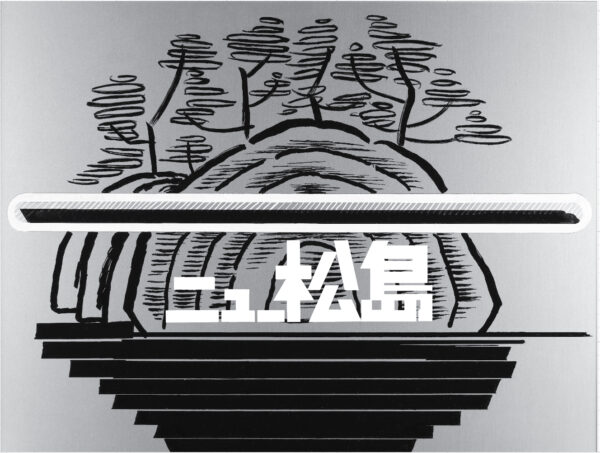
Saturday, October 28 – Sunday, December 3, 2023
Opening Reception: October 28, 18:00 -20:00
Open: Wed.-Fri. 13:00 -19:00 / Sat.&Sun. 12:00 -18:00
Closed: Mon., Tue. and National holidays
*We will be open everyday, 10:00-18:00 during Art Week Tokyo
MUJIN-TO Production is pleased to present New Matsushima, an exhibition by Sachiko Kazama.
This exhibition reconstructs a group of works presented at Reborn Art Festival 2021-22 (Reborn, here after) held last summer in Ishinomaki, Miyagi Prefecture, with the addition of two new works created as a sequel.
Since the stone warehouse that survived the tsunami was used as the exhibition venue for the Kazama’s presentation at Reborn, Kazama became interested in Nobiruishi, tuff stone used to build the venue, and began researching about it.
While visiting the Nobiru Coast, where the remains of quarries still remain, and Matsushima, which is made of the same tuff stone, Kazama’s first impression was change.
The miniature garden -like landscape of the Nobiru Coast, which has been called Oku-Matsushima since early modern times, has been divided by a concrete embankment, and the small islands of Matsushima, which Matsuo Basho praised as the natural artifacts of creation, look somewhat lonely due to erosion and collapse caused by waves. The islands were very different from the impressions she had seen on postcards of the islands 100 years ago.
Destruction by the forces of nature. Public construction works for disaster prevention. How should we accept the reality that the landscape is being changed by an irresistible force?
Kazama thought the answer might lie in the word impermanence.
Everything is always changing.
Change is a phenomenon of impermanence, and it depends on the feelings of each individual whether to deplore it as deterioration or renewal, doesn’t it? After a while, I began to think about this.
A river flows constantly, yet it is not the same water as before. I felt the universality that transcends time and space, and I became convinced that impermanence is the providence of the universe, and the meaning of Basho’s statement in the preface to his Oi no kobumi (record of travel worn satchel), “Let us follow the creation” became clear to me
From the worldview of these predecessors, we can see impermanence as a continuum of renewal, and change as the new, and the title work, New Matsushima, represents Matsushima and Ishinomaki as new landscapes that continue to change.
Using the symbols of landscape painted in Ko-Imari on a durable aluminum plate, the artist depicted Matsushima, a scenic spot, as it was in the composition of prewar sightseeing postcards.
The new works, FLOW (Oshima) and FLOW (Sode no Watari / Namidagawa), are sequels to the large woodblock print FLOW (Okitsukuni / Furouzan), which was exhibited in Ishinomaki.
This series is a combination of woodblocks and prints placed next to each other.
In recent years, Kazama has been showing works that combine prints and woodblocks like mirror matching (however, since the original woodblocks are further engraved after the prints are made, they are not really mirroring each other)
In Kazama’s words, If the plate is the substance, the picture is the shadow, but the woodblock has been used and is, in a sense, a corpse. The work is structured as if one of the two sides is the past and the other side is this world, but there is no separation between the two sides and they can come and go as they please. Just as old Japanese poems tell of imaginary ships coming and going on the sea, and haiku poets are driven to travel in longing for unseen images, and the meme of the pillow words allows people to share their feelings beyond time and space, the human heart flows and circulates….
Like the flow of a river, the progress of time cannot be stopped, and flowing water is not always the same. However, the existence of water does not change over tens of thousands of years, and even if the characteristics of water change, does not its essence return to its source and circulate again?
She entrusted FLOW with the idea that the act of thinking and seeing based on the memories of songs and places of interest from the past will bring hope of eternal return to the fate of decay and death.
New Matsushima, an attempt to affirm impermanent change as new, FLOW series, which found the possibility of returning to the headwaters by thinking and seeing against an irresistible current, Stretching Coast, which depicted the ever-changing landscape of the Nobiru area, called Oku-Matsushima, on a seemingly endless rolled receipt paper. The exhibition will also feature Stereoscopic, a series of overlapping views of the past and present of the former Kitakami River in Ishinomaki, Miyagi Prefecture, which show the flow of time in terms of change and transition.
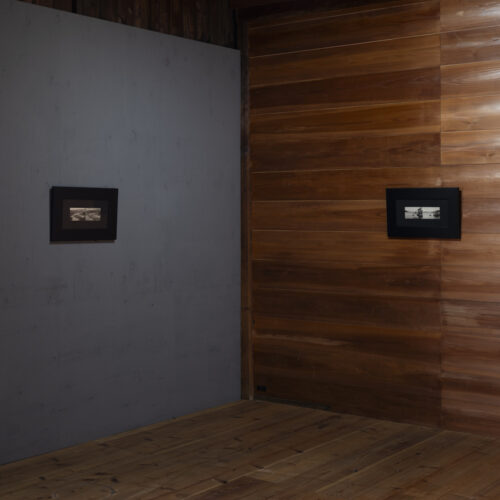
Installation view, Sachiko Kazama "New Matsushima" 2023 Photo: Kenji Morita
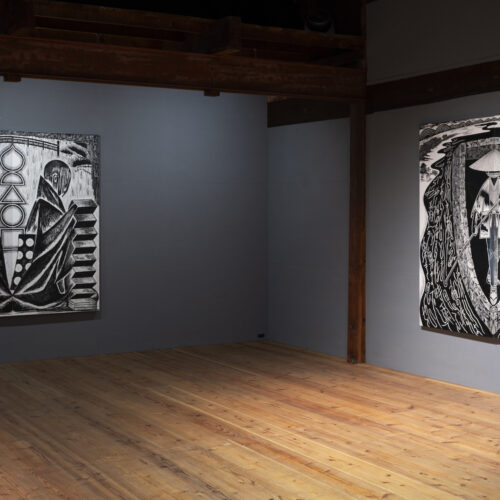
Installation view, Sachiko Kazama "New Matsushima" 2023 Photo: Kenji Morita
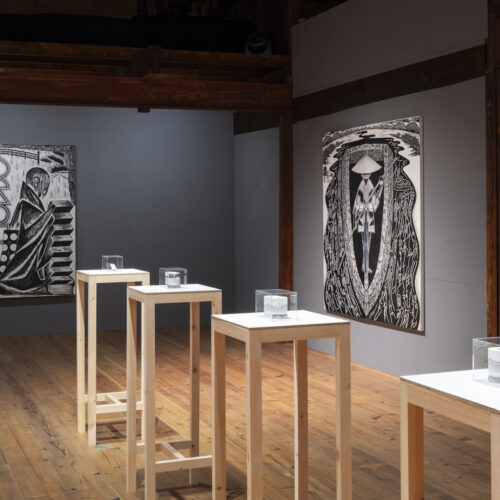
Installation view, Sachiko Kazama "New Matsushima" 2023 Photo: Kenji Morita
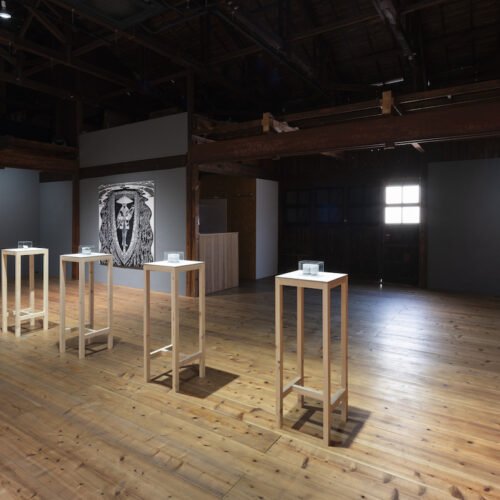
Installation view, Sachiko Kazama "New Matsushima" 2023 Photo: Kenji Morita
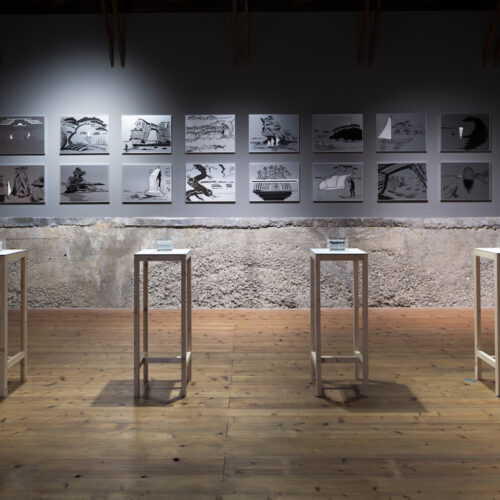
Installation view, Sachiko Kazama "New Matsushima" 2023 Photo: Kenji Morita
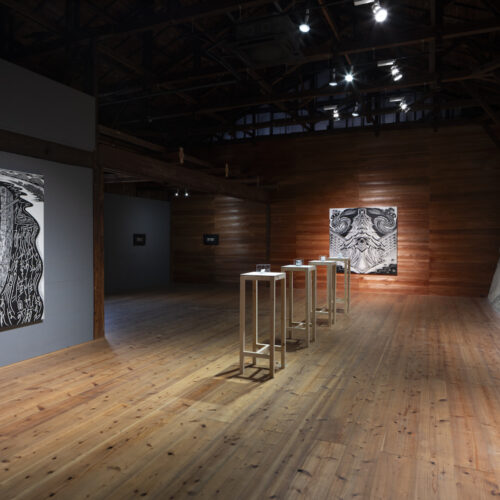
Installation view, Sachiko Kazama "New Matsushima" 2023 Photo: Kenji Morita
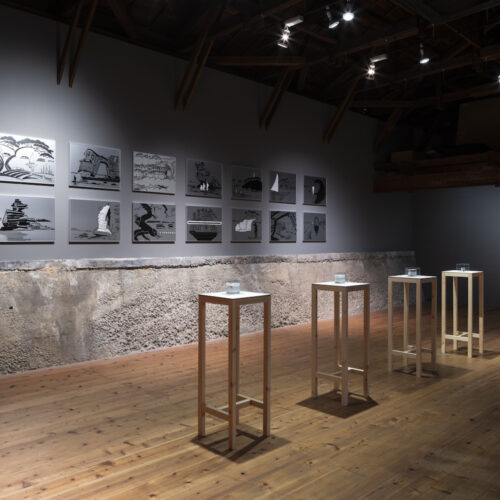
Installation view, Sachiko Kazama "New Matsushima" 2023 Photo: Kenji Morita
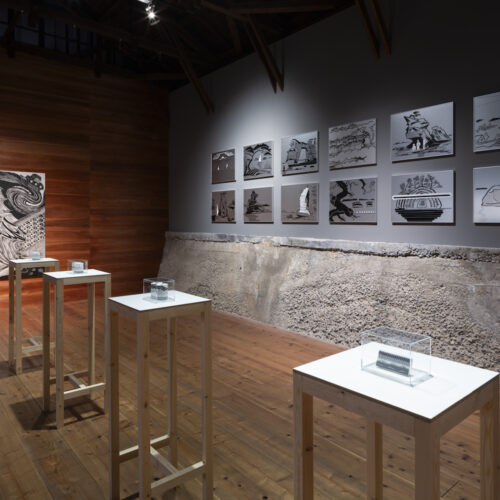
Installation view, Sachiko Kazama "New Matsushima" 2023 Photo: Kenji Morita

Installation view, Sachiko Kazama "New Matsushima" 2023 Photo: Kenji Morita
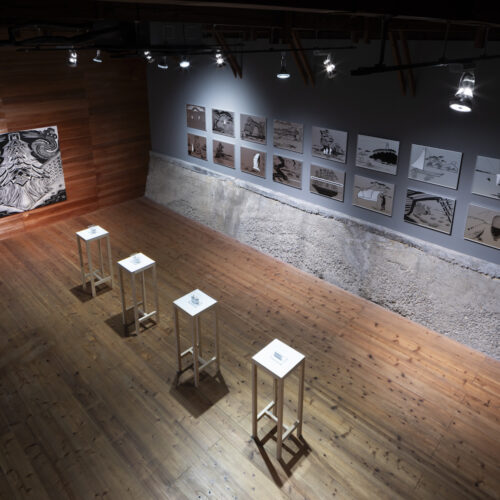
Installation view, Sachiko Kazama "New Matsushima" 2023 Photo: Kenji Morita